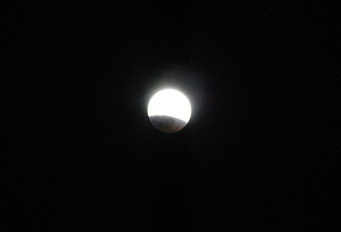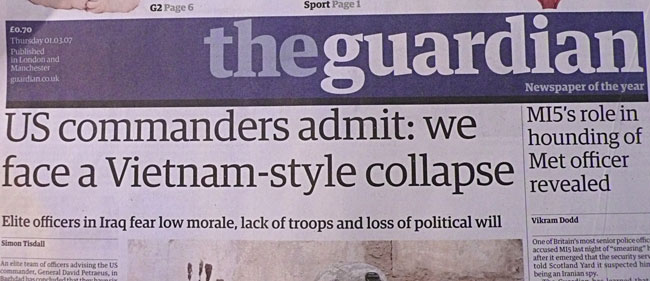
Photographed at 21:57:52 this evening.


Photographed at 21:57:52 this evening.
Hmmm… Funny what one finds on the Web. Here’s Twitter, which describes itself as “A global community of friends and strangers answering one simple question: What are you doing? Answer on your phone, IM, or right here on the web!”
Lovely New York Times piece by Denis Dutton on the Joyce Hatto story…
We normally think of prodigies as children who exhibit some kind of miraculous ability in music. Joyce Hatto became something unheard of in the annals of classical music: a prodigy of old age — the very latest of late bloomers, “the greatest living pianist that almost no one has heard of,” as the critic Richard Dyer put it for himself and many other piano aficionados in The Boston Globe.
Little wonder that when she at last succumbed to her cancer last year at age 77 — recording Beethoven’s Sonata No. 26, “Les Adieux,” from a wheelchair in her last days — The Guardian called her “one of the greatest pianists Britain has ever produced.” Nice touch, that, playing Beethoven’s farewell sonata from a wheelchair. It went along with her image in the press as an indomitable spirit with a charming personality — always ready with a quote from Shakespeare, Arthur Rubinstein or Muhammad Ali. She also had a clear vision of the mission of musical interpreters, telling The Boston Globe: “Our job is to communicate the spiritual content of life as it is presented in the music. Nothing belongs to us; all you can do is pass it along.”
Now it has become brutally clear that “passing along” is exactly what she was up to. Earlier this month, a reader of the British music magazine Gramophone told one of its critics, Jed Distler, that something odd happened when he slid Ms. Hatto’s CD of Liszt’s “Transcendental Études” into his computer. His iTunes library, linked to a catalogue of about four million CDs, immediately identified it as a recording by the Hungarian pianist Laszlo Simon. Mr. Distler then listened to both recordings, and found them identical.
Since then, analysis by professional sound engineers and piano enthusiasts across the globe has pushed toward the same conclusion: the entire Joyce Hatto oeuvre recorded after 1989 appears to be stolen from the CDs of other pianists. It is a scandal unparalleled in the annals of classical music…
At one level, this saga invites a sanctimonious response. I first came upon the story here, a site which enabled one to listen to a Hatto recording on the left channel of my stereo while hearing the ripped-off version in the right-hand channel. But I also felt pity for Hatto’s husband, whose original motive seems to have been compassionate rather than malicious. “Joyce was beginning to find playing very painful and making involuntary noises that would be too distressing for the listeners to hear,” he wrote in a letter obtained by the classical music magazine Gramophone and quoted in a Guardian report.
On a wider canvas, the iTunes aspect of the Hatto story highlights how difficult it is becoming to plagiarise. On the one hand, digital technology makes it easy to make perfect copies; on the other hand, pattern-matching technology makes it easy to spot the copying.

A scene in Bedfordshire this afternoon.
From SplashCast…
The BBC announced today that it has singed [sic] a deal with Google in regards to BBC video on YouTube. The agreement raises interesting strategic questions as it represents an important alternative approach to the high profile requests to remove content by other publishers. The BBC has made a series of high-profile announcements regarding new social media – the organization said it was remaking its website in the image of MySpace last April for example. We’ll see how much is hype and how much of this activity is smart use of new media.
The basics of the deal announced today are these:
* The BBC will create two channels on YouTube now and one more by the end of the year.
* The main channel will be advertising free promotional clips of entertainment programming, designed to drive traffic to the BBC’s own site for viewing the full programs.
* The secondary entertainment channel, BBC Worldwide, will include archival footage and some pre-roll ads. UK viewers will be able to see this and that’s a big deal, as the licensing fees every pays are supposed to keep their BBC experience ad-free.
* The third channel, out later this year, will show about 30 news clips per day and will include ads. Those ads, however, won’t be visible to UK users. Fascinating.
* The BBC will not actively hunt down its copyrighted materials in other users’ accounts, but it does reserve the right to swap low quality footage out for high quality versions and make other small changes. That’s very smart.
Hmmm…. We’ll see.
Interesting interview with Apple’s COO, Tim Cook.
Q: Since its introduction at Macworld Expo, people have questioned the success of the iPhone. Could you talk a little about why Apple will be successful.
A: The iPhone is a revolutionary product. Steve mentioned this at Macworld, revolutionary products only come along so often: the Mac in 1984 re-invented the computer industry. The iPod in 2001 re-invented the music industry. And we think the iPhone is that class of product for the cell phone industry.
It’s a revolutionary cell phone with visual voicemail. It’s the best iPod that Apple has ever done and its this “really cool” internet device with desktop-class email, browsing, maps, and searching — all in one product. I think people are going to be amazed and delighted over it. We’ll have to see. Obviously, there are people who would prefer us not be successful in this, but I think it’s a revolutionary product. And we’ll see what the customers think. That’s the most important thing.
Q: Your stated goal for calendar 2008 is to ship 10 million units, which is about 1 percent of the overall market. Given the functionality and price point of the product, it eliminates the low end of the market. How do you look at the available market for the first generation of iPhone and what kind of marketshare do you think you can take?
A: The traditional way of look at a market you look at products you are selling, you think about the price bands that are currently market, you look at price band your product is in, and you assume you can get a percentage of it. And that’s how you get to the addressable market. That kind of analysis doesn’t make really great products. The iPod would not have been brought to market if we would have looked at it that way. How many $399 music players were being sold at that time?
Today in the cell phone industry, a lot of people pay zero for the cell phone. Guess what? That’s what it’s worth! And so, if we offer something that has tremendous value and is sort of this thing that people people didn’t have in their consciousness — it was unimaginable, I think a whole bunch of people will pay $499 and $599. Our target is clearly to hit 10 million and I would guess that some of those people — there are some of those in the audience — who are paying zero because it’s worth zero, will pay more a bit more because its worth it.
Q: Can you go through some of the thinking of not putting 3G in the phone, given that it is leading edge technology in every other aspect.
A: Our thinking was first and foremost that we wanted GSM because GSM was the world standard and that was one of the factors in the selection of Cingular. Secondly, the product as we announced it has wireless capabilities. Many people, like in this room, have access to WiFi, including this room, home, where you have coffee. Between this spots we are going to use 2.5G because it’s widely deployed. We’re confident that it will give the user a great experience.
Q: Do you expect iPhone to cannibalize iPod? If so, when might that kick in?
A: You know it’s still too early to tell. But I would make this point. We’ve sold 90 million iPods. 90 million. It still amazes me saying it. And these are being sold for a wide of usages: there’s a wide variety of form-factors, wide variety of capacities and a wide variety of price points. You know that there are a lot people that desire the iPod…
Good point about the iPod and the $399 music player.
From Good Morning Silicon Valley…
The risk in asking customers what they want is that they will tell you. And then, spoiled brats that they are, they will expect you to follow through. It’s a risk Dell took two weeks ago when it launched IdeaStorm, a collaborative suggestion box intended to surface the deepest wants and needs of customers. Turns out the biggest, or at least most vocal, demand by far is for Dell to offer computers with the Linux OS preinstalled…
According to Nate Anderson of ArsTechnica, 85,000 users went to the trouble of creating an account on the Dell site and voting for the “pre-installed Linux” option, and another 55,000 asked for “pre-installed OpenOffice.”
IN a statement, Dell responded to the IdeaStorm firestorm by saying that it wouldn’t be able to meet the demands because customers want too many variants. “There is no single customer preference for a distribution of Linux,” said Dell. “We don’t want to pick one distribution and alienate users with a preference for another.”
Ryan Paul — also of ArsTechnica, is sympathetic to the company’s dilemma.
The big problem with Linux preinstallation, he writes,
is that one size rarely fits all. Although modern community-driven distributions like Ubuntu and Fedora are designed for a broad audience, serious Linux users are very particular about how their systems are configured. This is even more true for users who prefer highly granular distributions that provide more installation options. Smaller hardware vendors that specialize in Linux preinstallation are better equipped to accommodate user requests for certain configurations.
As an individual Linux user, I would much rather see Dell make Windows optional for every computer and focus on ensuring that the hardware components in Dell computers are compatible with Linux in general rather than specific Linux distributions.

The headline says it all, really. Full story reads, in part:
An elite team of officers advising the US commander, General David Petraeus, in Baghdad has concluded that they have six months to win the war in Iraq – or face a Vietnam-style collapse in political and public support that could force the military into a hasty retreat.
The officers – combat veterans who are experts in counter-insurgency – are charged with implementing the “new way forward” strategy announced by George Bush on January 10. The plan includes a controversial “surge” of 21,500 additional American troops to establish security in the Iraqi capital and Anbar province.
But the team, known as the “Baghdad brains trust” and ensconced in the heavily fortified Green Zone, is struggling to overcome a range of entrenched problems in what has become a race against time, according to a former senior administration official familiar with their deliberations.
“They know they are operating under a clock. They know they are going to hear a lot more talk in Washington about ‘Plan B’ by the autumn – meaning withdrawal. They know the next six-month period is their opportunity. And they say it’s getting harder every day,” he said.
Between April 2004 and April 2005, Mark Ryan collected something like 1500 frames off the web camera positioned at Canal Park in Minnesota and put them together in this video. Mesmeric stuff, beautifully edited.
Here’s something to drive innumerate spin-doctors wild: a mathematical theory of opinion formation by Fang Wu and Bernardo Huberman of HP Labs. Abstract reads:
We present a dynamical theory of opinion formation that takes explicitly into account the structure of the social network in which individuals are embedded. The theory predicts the evolution of a set of opinions through the social network and establishes the existence of a martingale property, i.e. that the expected weighted fraction of the population that holds a given opinion is constant in time. Most importantly, this weighted fraction is not either zero or one, but corresponds to a non-trivial distribution of opinions in thelong time limit. This coexistence of opinions within a social network is in agreement with the often observed locality effect, in which an opinion or a fad is localized to given groups without infecting the whole society. We verified these predictions, as well as those concerning the fragility of opinions and the importance of highly connected individuals in opinion formation, by performing computer experiments on a number of social networks.
So now you know. The paper has lots of nice equations of the kind that make some people’s eyeballs revolve. But, at heart, it reaches reassuringly obvious conclusions. For example,
Our theory further predicts that a relatively small number of individuals with high social ranks can have a larger effect on opinion formation than individuals with low rank. By high rank we mean people with a large number of social connections. This explains naturally a fragility phenomenon frequently noted within societies, whereby an opinion that seems to be held by a rather large group of people can become nearly extinct in a very short time, a mechanism that is at the heart of fads.
These predictions, which apply to general classes of social networks, including power-law and exponential networks, were verified by computer experiments and extended to the case when some individuals hold fixed opinions throughout the dynamical process. Furthermore, we dealt with the case of information asymmetries, which are characterized by the fact that some individuals are often influenced by other people’s opinions while being unable to reciprocate and change their counterpart’s views.